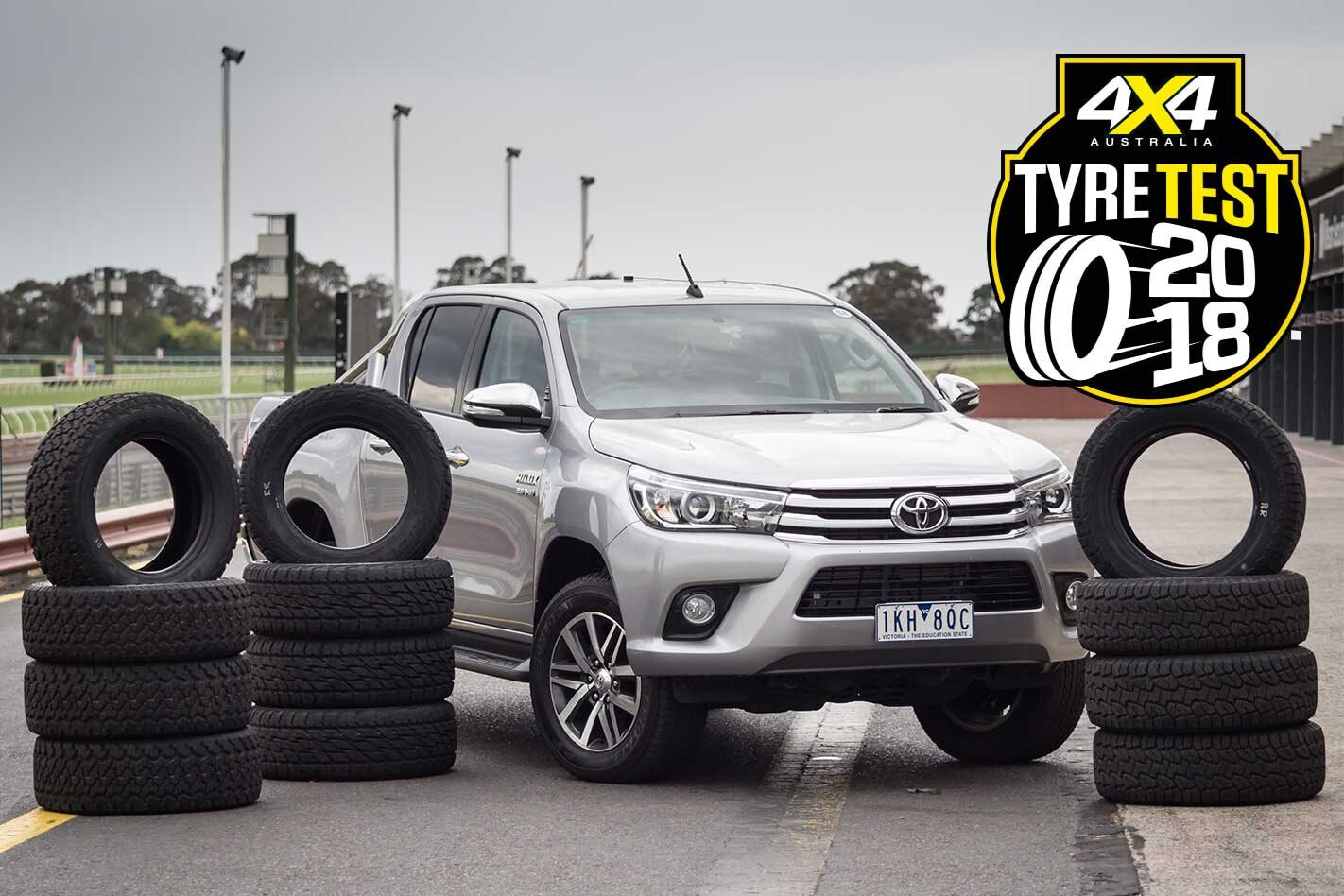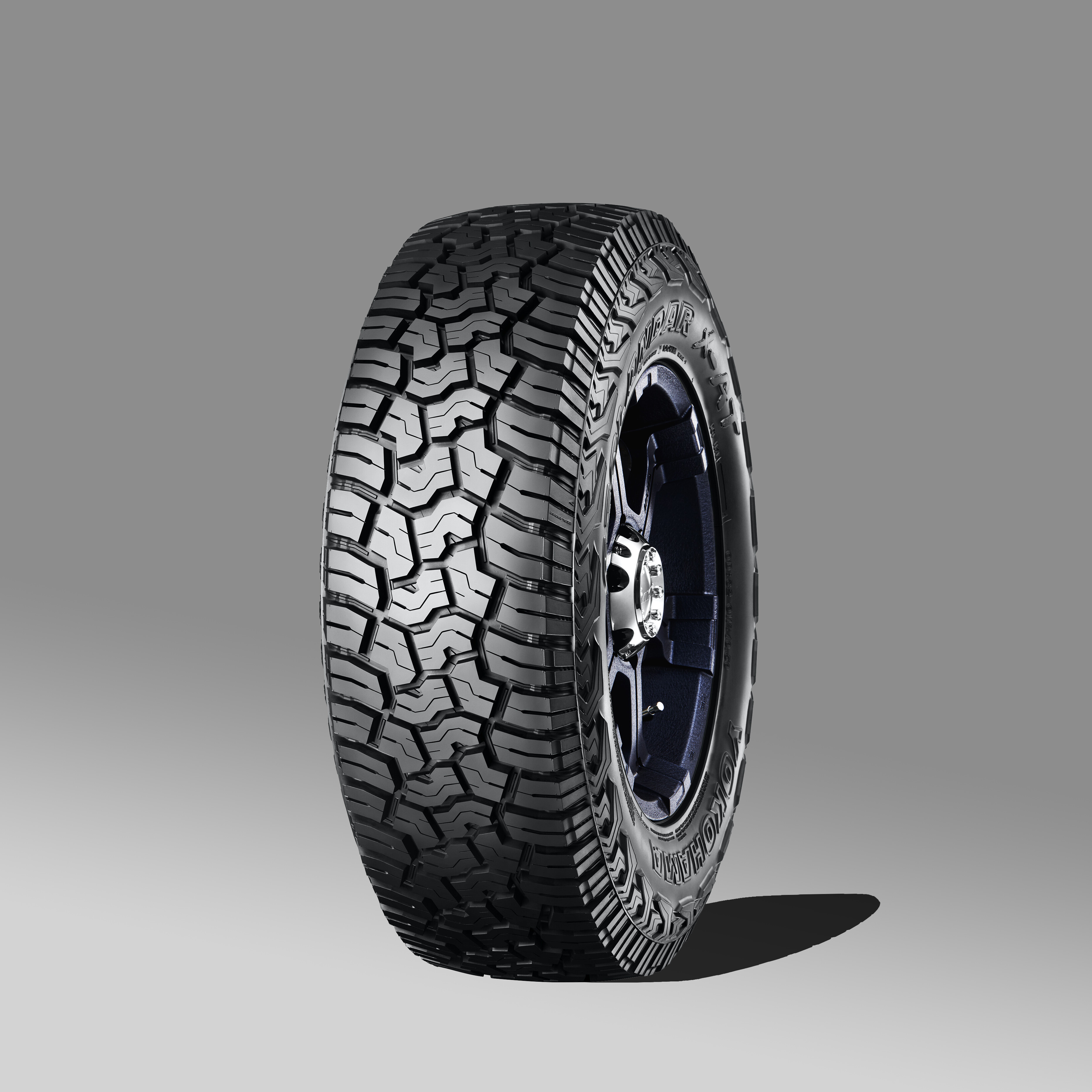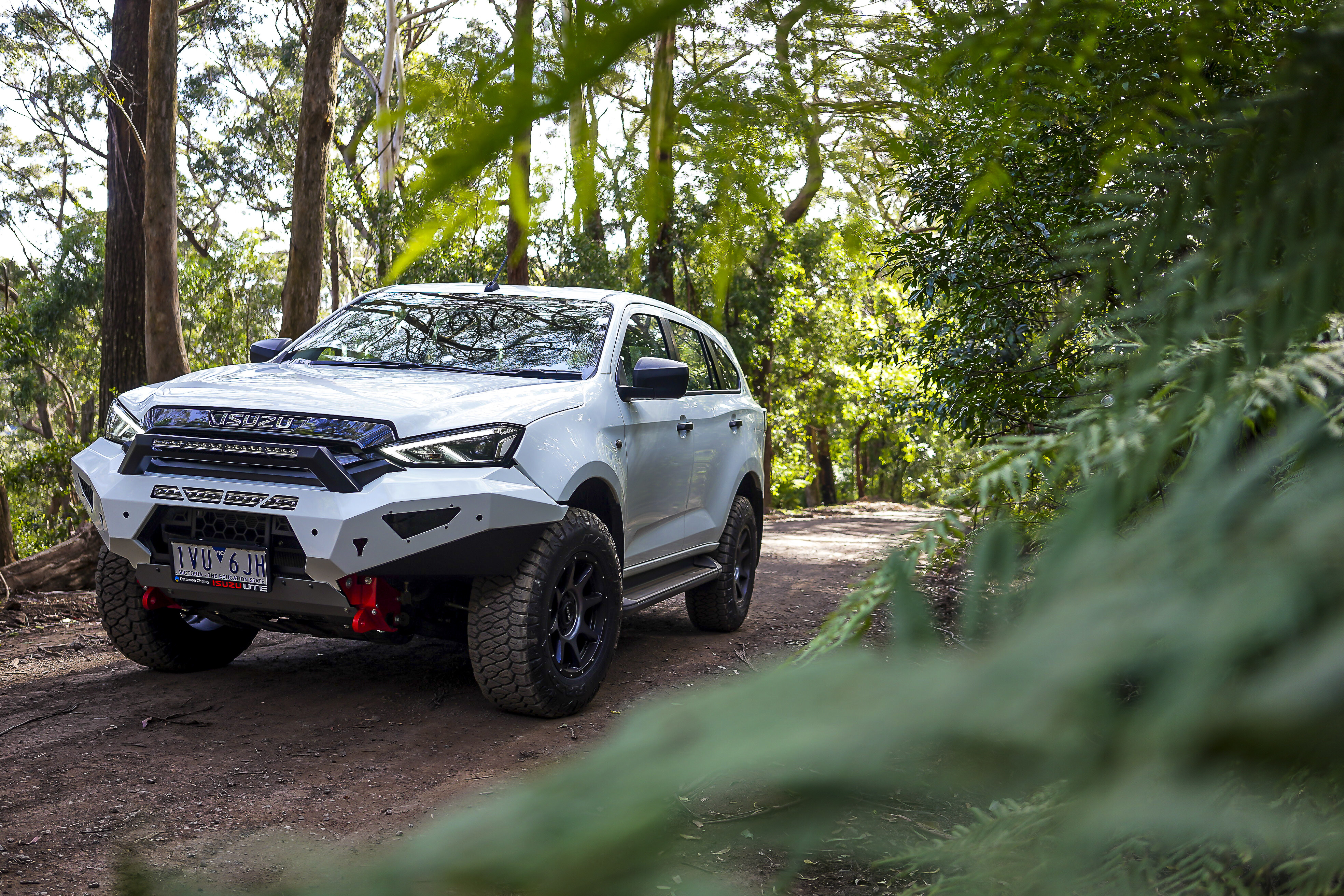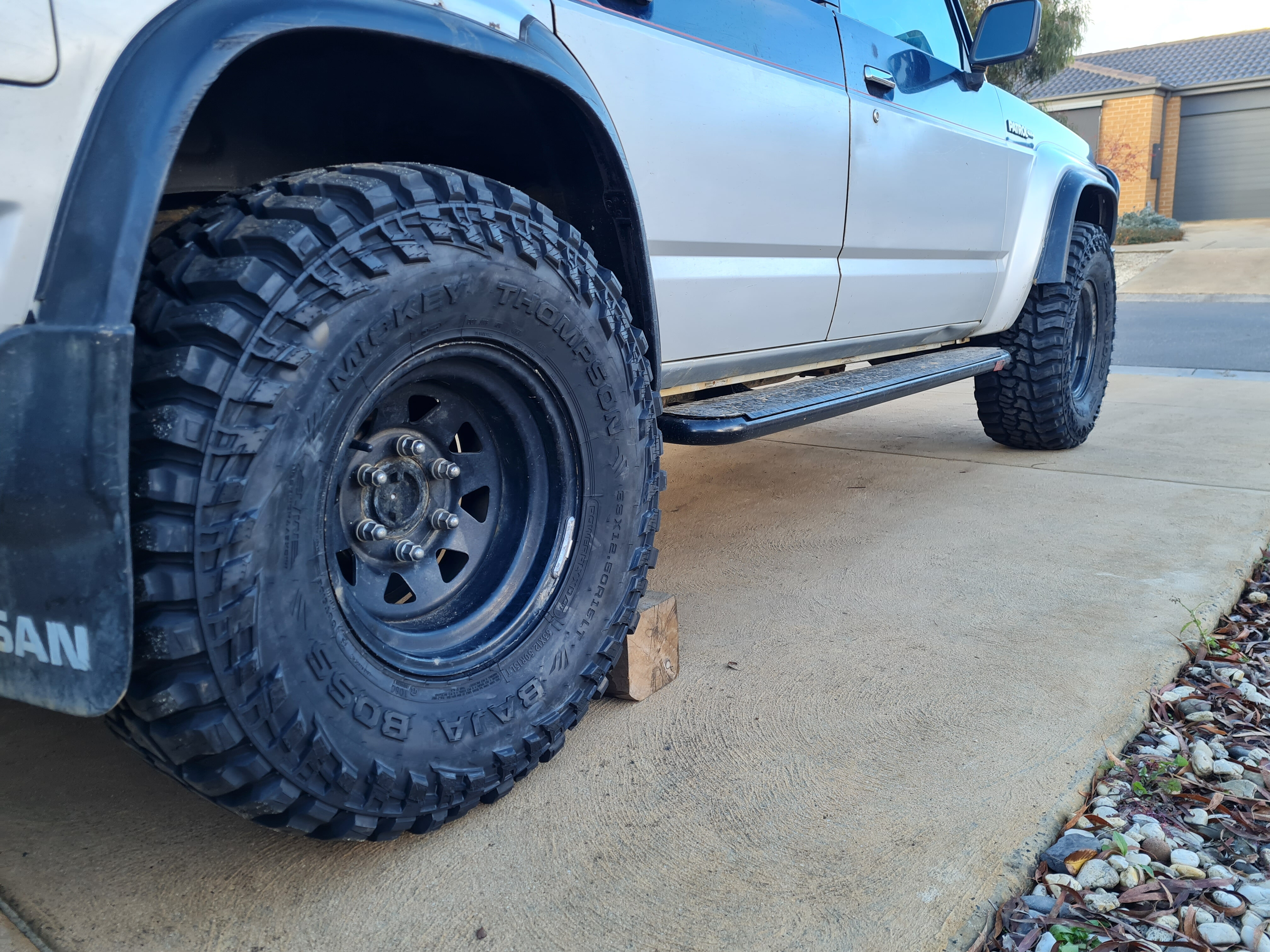IT’S ONE of the first things owners do once they’ve driven their new fourby away from the dealership: bolt on a new set of tyres.
Some will even get the dealer to do it, leaving behind the original rubber with nobbles from the mould still in place. The temptation of a chunky set of muddies or all-terrains lure many an off-roader, and with good reason: tyres designed specifically for off-roading generally bring better traction once the bitumen ends and will almost certainly resist punctures better than the on-road-biased tyres typically fitted to a Land Cruiser, Ranger, Prado or Discovery.
The beefier look doesn’t hurt, either – and that’s just the start of their benefits. But other than a couple of thousand dollars, what else do you leave on the table when you swap your rubber? What compromises do you make by fitting tyres better suited to the bush than the ’burbs? That was the goal of this test: to determine what you compromise once you change your tyres.
After all, tyre design is all about compromise. Low-profile, high-performance supercar tyres deliver superb grip and response, but wear out quickly and are virtually useless on gravel. Chunky off-road tyres do a terrific job of moulding over rocks and fending off sharp pinches, but their big tread blocks and taller profile compromise on-road grip and steering accuracy.
Once you consider wear levels, puncture resistance, cornering grip in the wet/dry, braking performance in the wet/dry, grip on mud/gravel/sand/grass/rocks, noise levels and handling, it quickly becomes clear there is no such thing as the perfect tyre.
But which is best for you?
THE TYRES
Our test vehicle is a current Toyota Hilux SR5 with standard 18 x 7.5-inch alloy wheels, and we assembled three aftermarket tyres matching the same 265/60 dimensions of the original fitment tyres.
Speaking of which, Toyota fits three different tyres to the SR5 from the factory in Thailand – one each from Michelin, Bridgestone and Dunlop. For this test we secured a set of the standard Dunlop Grandtreks and Bridgestone Dueler H/Ts, with the aim of comparing the aftermarket tyres directly against them.
Our aftermarkets are all-terrains and include a set from Hankook, Maxxis and Bridgestone. The Bridgestone Dueler AT and Maxxis AT-980 both have a light truck construction, something that brings a stronger build, typically for higher loads and more serious off-roading. The Hankook Dynapro AT-m is a regular passenger car construction.
All three of our aftermarket tyres boast a 114 load rating, good for 1180kg per tyre, which is 120kg more per tyre than the standard fitment rubber. However, all also reduce the maximum rated top speed.
The original tyres are rated to 210km/h, while the Bridgestone and Maxxis ATs lower that to 180km/h and the Hankooks to 190km/h. Significant, but of no concern for the average Australian adventurer.
When All-Terrains ain’t All-Terrain Not all all-terrains are created equal. Even within the category there are big differences between the most aggressive and most road-focused. Some, such as the 20-inch units fitted to the latest Land Rover Discovery, are more on-road biased. And others, such as the Maxxis AT-980s tested here, are for serious off-road use.
“Every manufacturer has a tyre to suit different needs,” said Glen Jones, the manager and owner of JAX Frankston. “You’ve got all-terrains that are more of a highway tyre, you’ve got all-terrains that are 50-50 (on- and off-road use), then you’ve got your more aggressive all-terrains.
“The all-terrain for more off-road capability would be a higher rubber to void ratio, so more traction off-road. You’ll have a light commercial grade tyre (LT), so a lot stronger in the casing, so less chance of sidewall damage.”
Understanding the Number on Tyres Glancing at the sidewall of a tyre might make you think you’ve stumbled across a poorly hidden password for a bank account. But there’s method to the madness of that collection of numbers and letters.
The largest of the main numbers – in our case 265 – represents the width of the tyre in millimetres. The two-digit number after the forward slash is the profile, represented as a percentage of the width. In our case the tyres were a 60-profile, calculating to 159mm between the rim and the road.
The R denotes a radial construction, which uses steel belts to bolster the carcass of the tyre for more strength and helping the tyre better maintain its shape. And the two-digit number after that refers to the diameter in inches, in this case 18.
Other numbers and letters include a complicated scale for the speed and load ratings. This is where you hit the internet. JAX Tyres has a great tips webpage with tables for those ratings. When choosing aftermarket tyres, keep in mind that while you can reduce the speed rating of the tyres (never below 140km/h) you cannot reduce the load rating; it must either be matched or bettered by whatever tyre you’re popping on.
Check with the roads authority in your state for more details.
THE TESTER
Our 4×4 tyre tester was experienced race driver and former Australian driver’s champion Paul Stokell. Heavily involved in driver training, Stokell is regularly behind the wheel of all manner of cars, from exotic sports cars to dual-cab utes and off-roaders. His experience and precision made him an ideal choice for the repetitive nature of testing tyres.
Collecting data was the job of a VBox data logger. One of the most trusted and reputable data loggers in motorsport, the VBox uses a GPS aerial attached to the roof, which is attached to the data-logging box inside the car. The system also records vision and writes the whole lot to a memory card, which is then transferred to a PC for analysis on bespoke software.
To ensure repeatability and accuracy, we didn’t change the positioning of the antenna for the entire test.
THE TESTING
For this test, there was no off-roading. The challenges of replicating the same mud/sand/gravel surface once a tyre has already traipsed over it were considered too great for the accuracy we were measuring. Instead, our evaluation involved pushing these tyres to the max on bitumen; in this case, the confines of a race track.
We looked at everything from grip in corners and under brakes, to noise levels. After all, even the most ardent off-roaders will likely spend more time on bitumen, even if getting to the Back of Beyond.
As well as the data, we got feedback from steerer, Paul Stokell. Unaware of the tyre he was on, Stokell was in the driver’s seat doing what he does best, leaving the JAX Tyres team to deliver him fresh boots as required. His comments were added to the armoury of 1s and 0s to help determine the battle between original and aftermarket A/T tyres.
BRAKING
Our first test involved a basic crash avoidance to measure straight-line grip – mash the brake pedal at 100km/h and see how far it travels before coming to a complete stop.
We entered the test at about 110km/h to ensure that by the time the car is braking from 100km/h it is at maximum retardation. It’s a full ABS stop across exactly the same section of bitumen, letting the electronics do the work to arrest the Hilux’s 2075kg bulk. Distance measurements were then taken from 100km/h to 0km/h.
What was surprising was how close the aftermarket tyres were to their standard-fitment rivals, all stopping within a metre of each other. Best performing of those aftermarkets was the Hankook – our only aftermarket tyre with a regular sidewall construction, not LT – which recorded a 43.52-metre stopping distance.
Crucially, it was about 30cm shorter than the best of the original equipment tyres, the Dunlop Grandtrek at 43.83m. The Bridgestone Dueler AT was close behind, with the Maxxis trailing. But, again, there’s almost no separating the tyres in this discipline.
If stopping in a hurry on bitumen is important to you, you’re not going to separate the originals from the aftermarkets for outright straight-line stopping power.
CORNERING
Going around bends is a very different discipline for a tyre, especially one tasked with tackling rocks, mud and sand.
Corners are where off-road tyres are typically challenged, courtesy of the relatively high sidewall or distance between the outer edge of the tyre and the wheel rim. That space is necessary to soak up bumps and help the tyres mould around obstacles, while also allowing for lower tyre pressures (to allow ballooning) in terrain such as sand. On 4x4s, that sidewall is also crucial for puncture resistance – a hole or slash in the side of the tyre means goodbye tyres.
However, that taller profile reduces steering accuracy due to the slight flex – and, therefore, delay – between the time the driver turns the wheel and the instant the tyre contact patch on the road surface reacts. Large tread blocks don’t help, either, due to their propensity to squirm around. It happens to varying degrees, and it was the most noticeable difference with our aftermarket tyres here.
In each of the two corners, though, one of the original tyres was quickest from point to point – in some cases by a tiny margin. However, the off-road tyres were by no means disgraced, holding on respectably and scrambling the Hilux through a corner much quicker than it’s likely to punt along a B road.
The Maxxis, for example, with its rugged tread, didn’t have quite as much grip, but it did have consistency at its limit. Stokell was impressed that once it had settled into a corner it was easy to control.
The Hankook – again, remember this is the only of the trio that is not an LT construction – offered the best grip, albeit by a relatively small margin. The Bridgestone wasn’t far off.
For cornering, then, it’s the original tyres with their smaller tread blocks and less aggressive patterns that do a better job of steering the Hilux.
SLALOM
The issue of steering accuracy was more pronounced in the slalom test. In the space of tenths of a second the tyre switched from maximum lateral force in one direction to max lateral force in the other. Then back again and again… and again. In those crucial tenths of a second enormous pressures are put on the construction of the tyre as it deals with the significant load shift.
This is the test where the original tyres show off their on-road bias. As well as recording times between 0.3 and 0.9 seconds faster than the aftermarket tyres – they’re fractions of a second but translate to an overall time between 3 and 8 per cent quicker – the originals also chimed in with better steering accuracy.
Whether it was the Dunlops or the Bridgestone OEs, Stokell commented on numerous occasions about the benefits to roadholding. “The two road tyres definitely feel better through the slalom,” he said, once we’d revealed which tyres he’d been driving on throughout the day. He also highlighted mid-corner stability as an area the standard tyres exhibited benefits.
Even within the trio of all-terrains, though, there were marked differences. The aggressive Maxxis, for example – those designed for the most rugged off-road use – had softer steering responses. “There was a delayed response in the tyre taking its set and heading the car in the right direction,” said Stokell.
That said, Stokell was equally surprised by how close the off-road tyres were to their more on-road-focused brethren. “It’s not night and day better than the off-road tyres,” he commented when critiquing the Dunlops. “It’s better on direction changes and a bit more responsive. But it’s not 50 per cent better; it’s 10 per cent better.”
NOISE
ONE area our trio of all-terrains trailed the original rubber was with their ability to stay quiet. More aggressive tread blocks tend to slap the road more violently as they come into contact with the bitumen, and it can get to the point where some chunky mud-terrains may not meet stringent drive-by noise targets set by authorities.
There’s nothing like that persistent level of humming here, and for these all-terrains we’re talking degrees; but degrees are enough to reduce the comfort levels over big distances.
The quietest of our tyres was the Dunlop, almost 1 decibel below the original Bridgestone, and it was followed by the original fitment Bridgestones. That said, Stokell noted they were one of the noisiest when it came to squealing on the limit – perhaps not an issue for most, but less than ideal if you bowl into a corner too vigorously.
Of the aftermarkets the Maxxis was the noisiest, with its chunky tread blocks working against it; at times there was even some whirring, more noticeable from the rear due to the lesser sound deadening from the tray of the Hilux.
The Bridgestone Duelers were the least intrusive of our ATs, almost matching the original tyres. Another thing to keep in mind is that our noise testing was done at 60km/h on the open road and 100km/h on the smooth race track confines.
The figures quoted here were taken at 60km/h with the transmission shifted to neutral, to minimise the mechanical noise of the engine and hone in on that tyre noise. Repeat the test at 100km/h on one of the poor quality coarse bitumen surfaces Aussie councils specialise in and you can expect a greater difference. A win, then, to the original tyres.
CONCLUSION
When you’re adding more off-road ability you expect compromises. Yet the biggest surprise for this test was how small those compromises were in switching to a more aggressive all-terrain tyre, especially in some of the disciplines. There’s almost no degradation in braking performance with the aftermarket all-terrains, for example.
However, the most aggressive of the lot – the chunky Maxxis – added almost a metre on the best of the tyres, suggesting braking performance could drop off more with more aggressive tread patterns. In corners, mid-corner grip levels approach those of the original tyres, but the original tyres provide sharper, more predictable responses.
To varying degrees all three of our aftermarket tyres exhibited slightly slower steering reaction times, taking the edge off cars that are already dynamically challenged due to their heavy kerb weights and high centres of gravity. Then there’s noise. If long-distance country road touring is important, then beware that chunkier tyres will likely up the roaring.
How far you want to take these compromises should depend on how far – and where – you want to go. Speak to the guys at JAX Tyres for expert advice tailored to your situation.
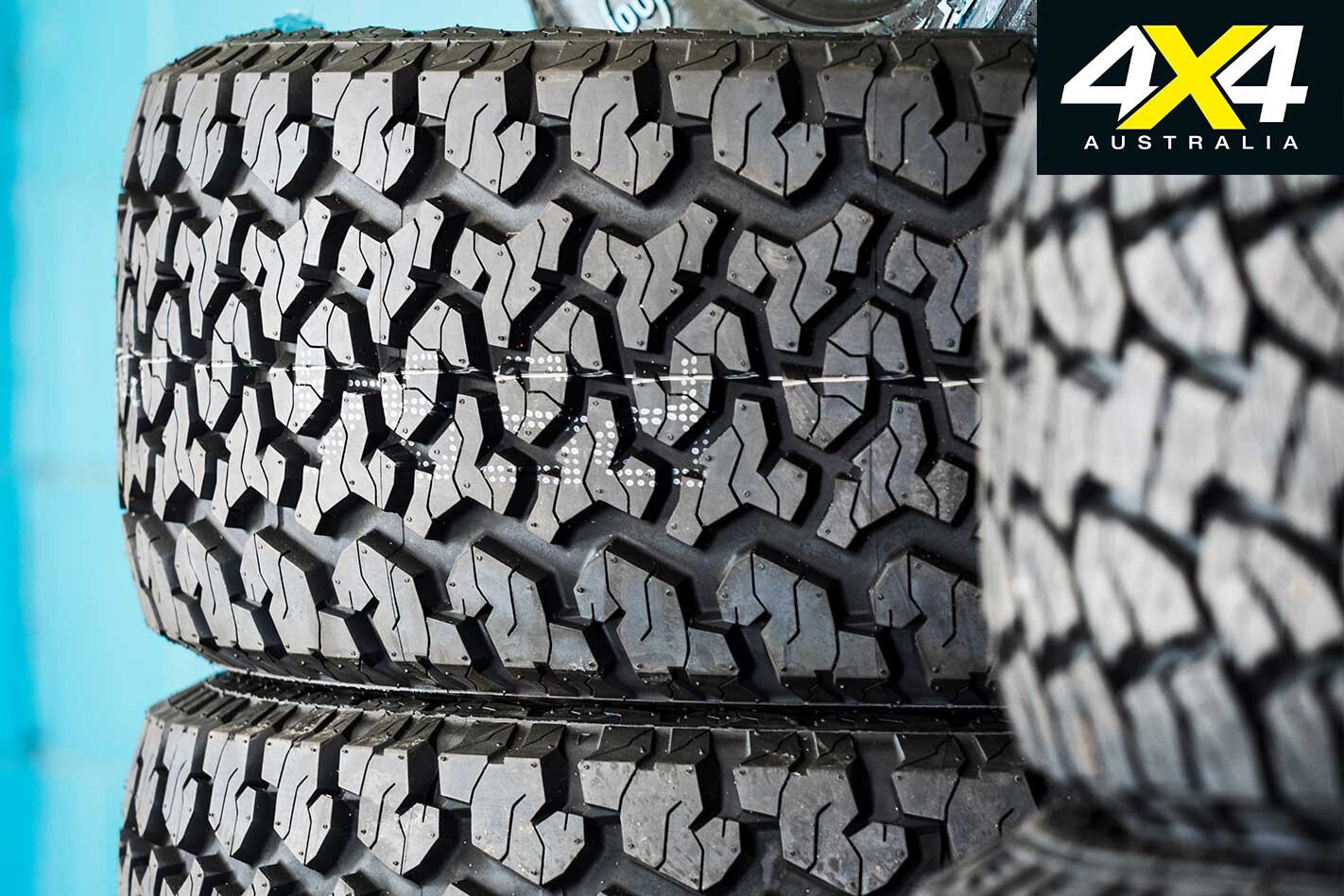
| u00a0 | Bridgestone Dueler H/T | Dunlop Grandtrek PT | Maxxis AT-980 | Hankook Dynaprou00a0AT-m | Bridgestone Dueler A/T |
| Construction | Passenger | Passenger | Light truck | Passenger | Light truck |
| Dry braking from 100km/h (m) | 44.53 | 43.83 | 44.48 | 43.52 | 43.61 |
| Cornering u2013 corners 1 and 2 combined (sec) | 14.31 | 14.48 | 14.7 | 14.55 | 14.91 |
| Slalom (sec) | 11.5 | 11.32 | 11.93 | 11.67 | 12.22 |
| Noise at 60km/h (decibels, dB) | 56.1 | 55.3 | 57.4 | 57.4 | 56.3 |
| Load index (kg per tyre) | 1060 | 1060 | 1180 | 1180 | 1180 |
| Speed rating index – maximum rated (km/h) | 210 | 210 | 180 | 190 | 180 |
The Crew Behind the Scenes
Our 4×4 tyre test couldn’t have happened without the support of JAX Tyres and Eagle SMF. The team from JAX Frankston was on-hand to perform lightning tyre changes.
Not quite two-second F1 quick, but inside 10 minutes we had one set of tyres removed, replaced, rebalanced and back on the Hilux. And there were plenty of changes throughout the day.
Each set of tyres was popped on the rims at least twice during the day, so all up there were at least a dozen sets of tyres changed, not only on and off the car but also on and off the rims.
The original Dunlop tyres were fitted and balanced at least four times. So, upwards of 50 tyre changes!

